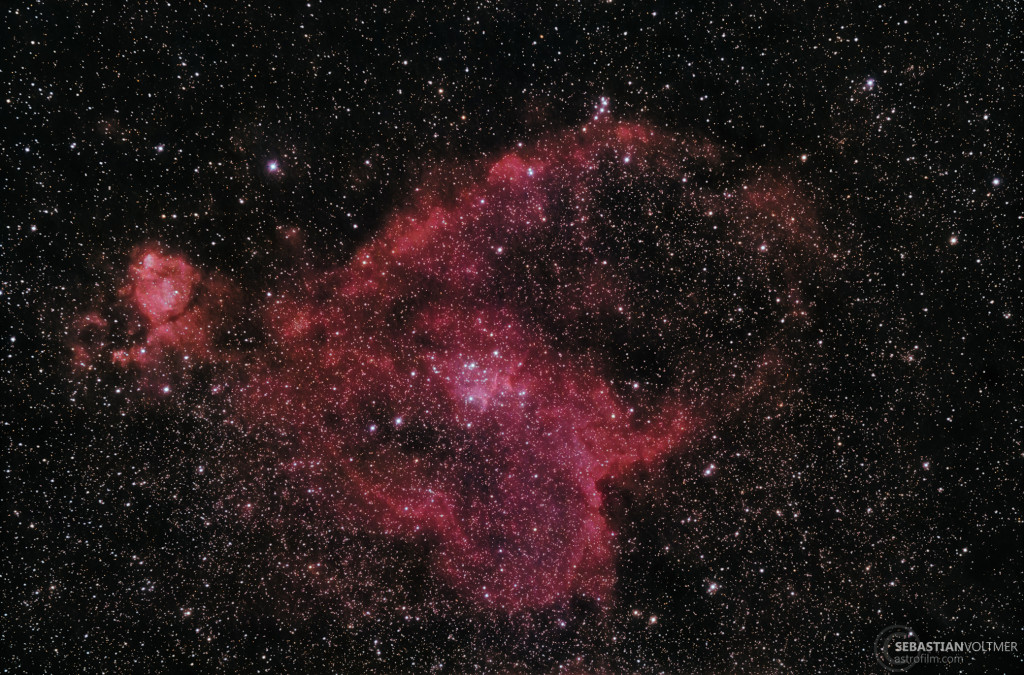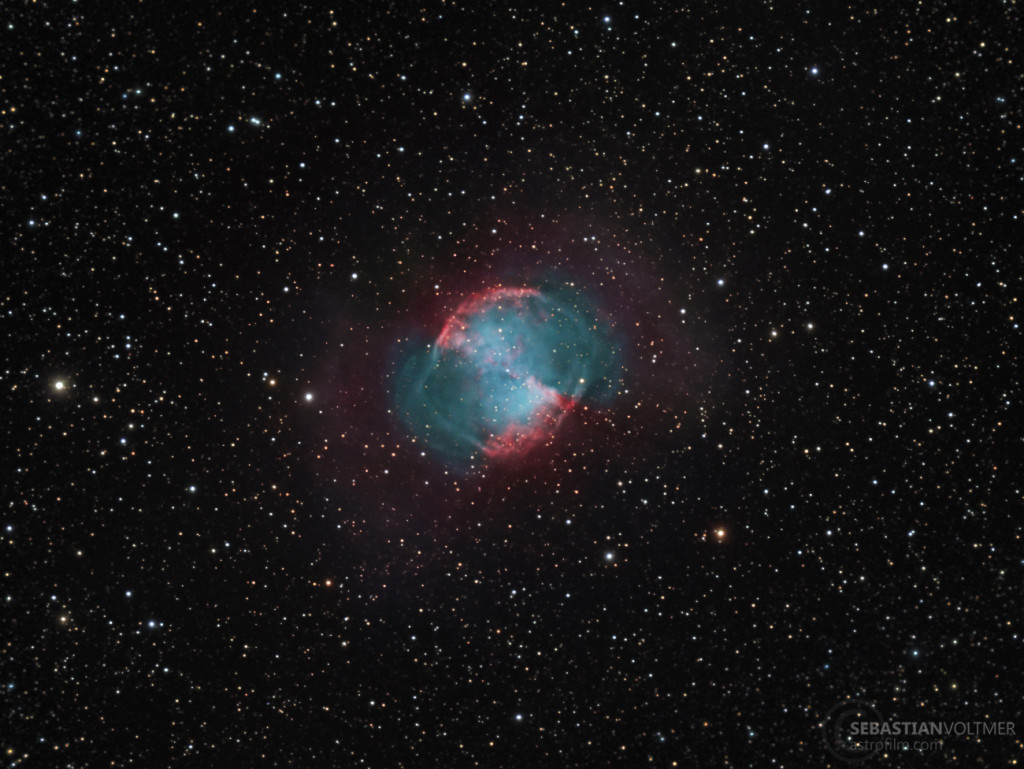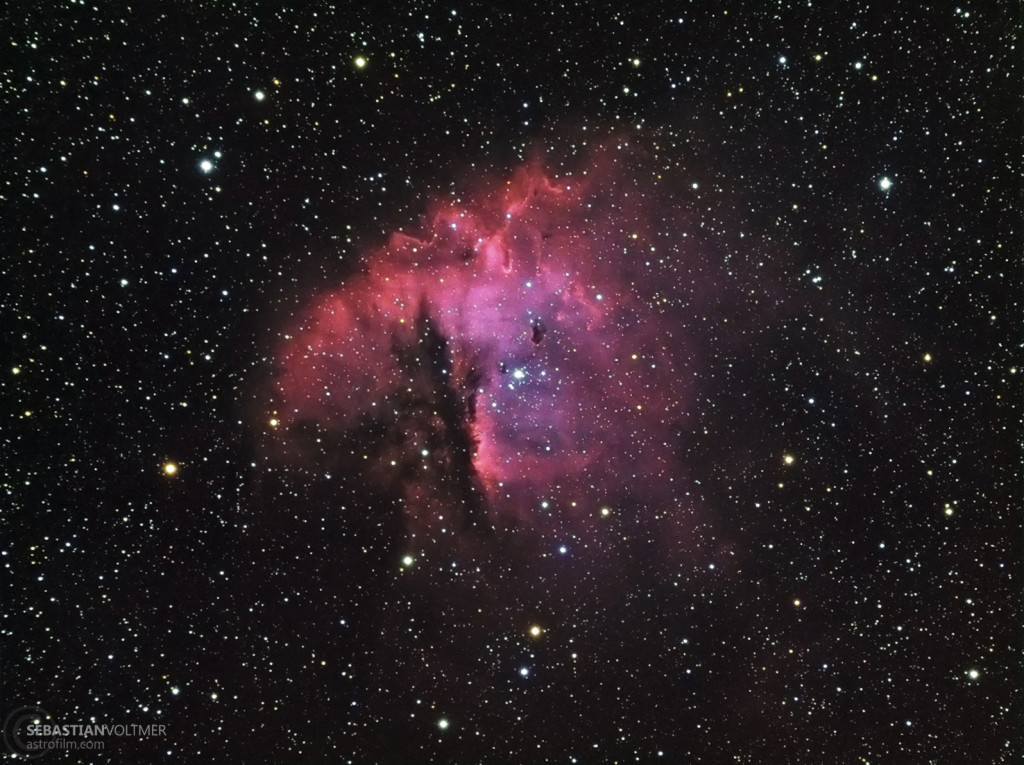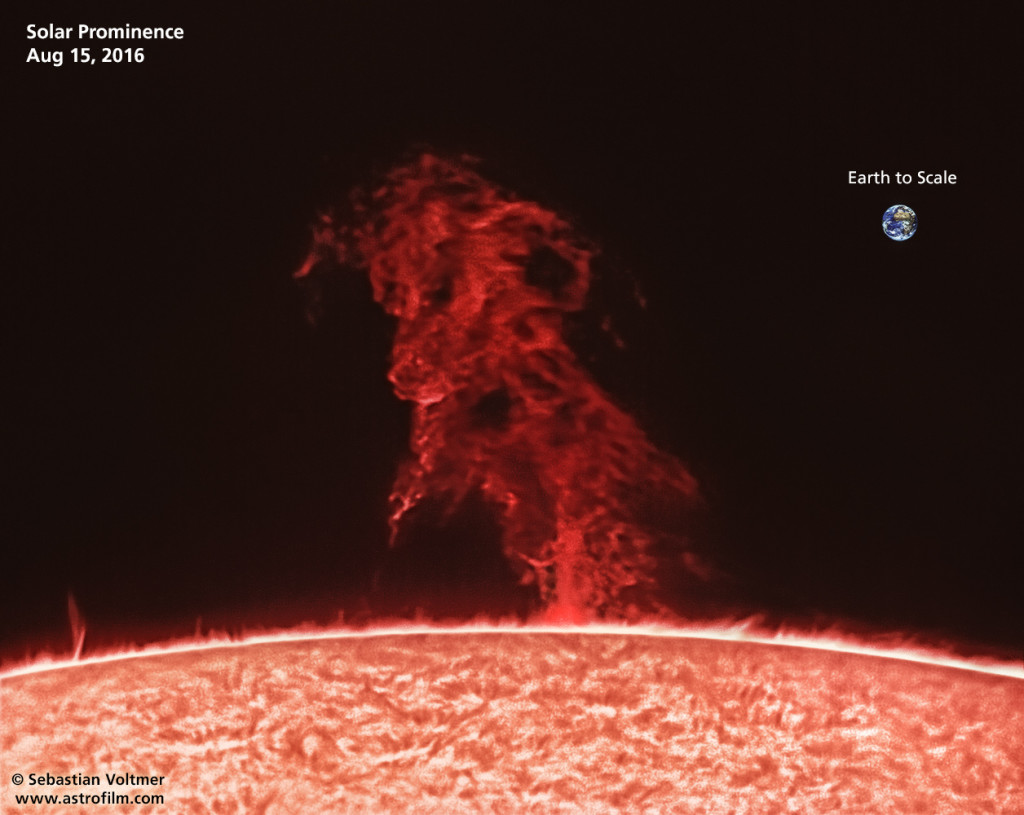We frequently receive beautiful photos of celestial objects from our customers. They are eager to show us, what they were able to achieve with their equipment. Very often we are over the moon, when we recognise the love of detail and the energy these astrophotographers have invested in these pictures.
Today we would like to present some very delightful astrophotos. The astrophotographer and filmmaker Sebastian Voltmer shows us beautiful impressions of space. These were taken, amongst others, with a Sony a7s and an ST-2000XM camera. The telescope used was a premium telescope: the Omegon apochromat 104/650 ED with field flattener.
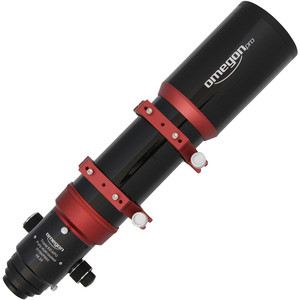
The Heart Nebula IC1805
The name of this nebula refers to its special shape: a red heart in the night sky. You find this nebula between the constellations Cassiopeia, Perseus and Giraffe. The heart is located approx. 4° east of the star ε Cas. An open star cluster, which illuminates the nebula, is embedded in the middle of the emission nebula.
The Dumbbell Nebula M27
The Dumbbell Nebula M27 in the Vulpecula constellation is the second brightest planetary nebula and thus a beacon in the starry sky. The originator of this nebula at a distance of approx. 1400 light years is a white dwarf, a star that has reached the end of its life.
Pacman Nebula NGC 281
The names of some nebulae clearly demonstrate that astronomers have a vivid imagination. NGC 281 is also known under the name Pacman Nebula. If you still can remember the time of the Commodore 64 etc., you will surely also remember the computer game. And this nebula with its dark clouds starkly resembles Pac-Man. The nebula is 9500 light years away from us and contains the twin star Barnhard 1. With a strong telescope, we can discover its four companions.
Crescent Nebula NGC 6888
Crescent: a half-moon in the form of a nebula. NGC 6888 is also known under the name Sickle Nebula. It is located right in the middle of the Swan constellation, at a distance of approx. 2.5° from the central Swan star, Sadr. Despite its prominent position in summer, the Crescent Nebula is not easy to see because of its small size of 18×13’ and its brightness of 10 mag. Scientists assume that the nebula has been ejected by a Wolf-Rayet star in the later stages of its life. For successful observation you need a crystal clear sky and an OIII-Filter.
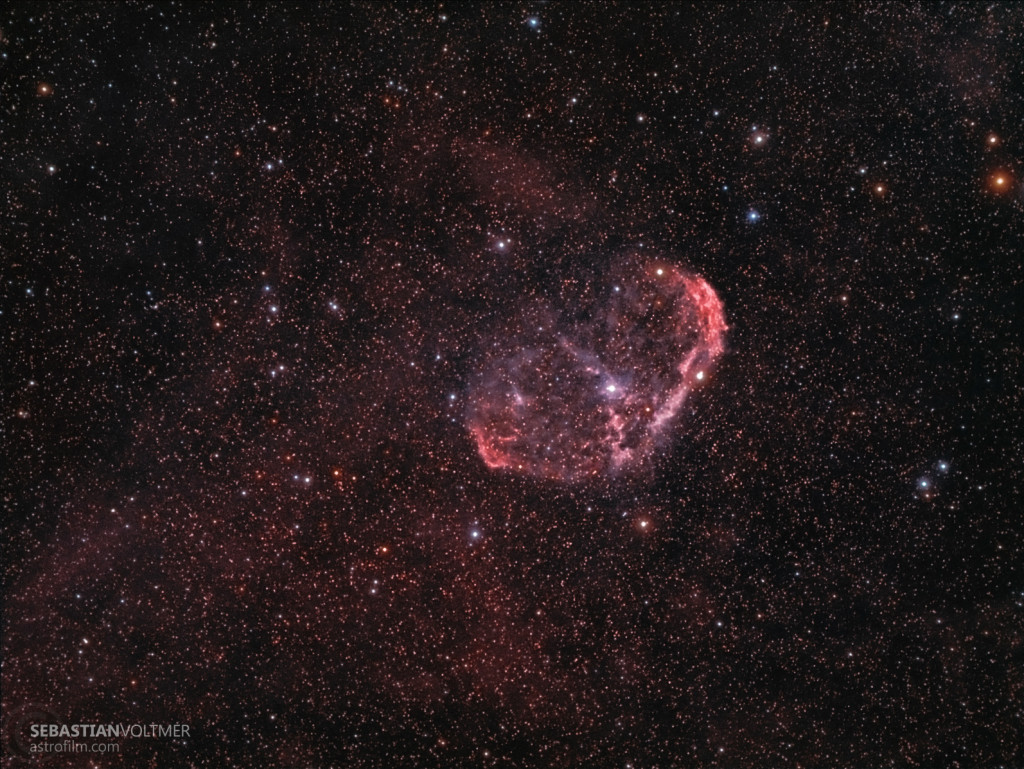
Solar flare
The picture gives you an impression of the size of a solar flare in comparison to Earth. This solar flare that appeared on the 15th of August 2016 had a length of approximately 13 Earths lined up.

